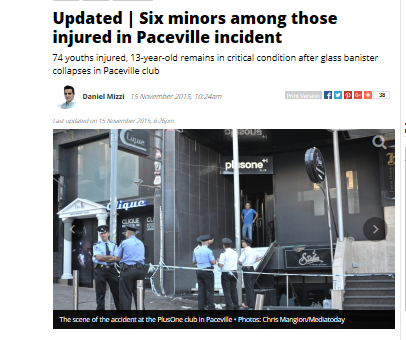
“Tall buildings cannot be avoided in our times. The choice we have is whether to control them or else whether to put up with their future growth.” These were the concluding comments of a report drawn up by Professor Mir Ali from the University of Illinois at Urbana-Champaign USA after a visit to Malta in 2008 during which he met with and advised MEPA on the future of tall buildings in Malta.The report is entitled Urban Design Strategy Report on Tall Buildings in Malta.
Professor Ali’s report contains recommendations most of which are as relevant today as when they were originally drafted. Central to these recommendations, way back in 2008, was the need to draw a master plan addressing tall buildings and their impacts. “Lack of a master plan,” Professor Ali stated, “results in uncontrolled developments and unpredictable impacts on urban life.” The developed master plan, Prof. Ali emphasised, should be “for Malta as a whole and for the selected sites for tall buildings, individually.” Drawing up such a master plan with a reasonable level of detail will take time to carry out, a considerable portion of which should be utilised in consultation, primarily with the residents to be impacted. Certainly much more time would be required than the November 2016 target indicated by the government earlier this week. A moratorium on the issuing of any development permit for high-rises until such time that a master plan has been discussed and approved would be a very reasonable course of action.
Professor Ali considered six sites, which were indicated to him by MEPA, as having the potential of hosting high-rise development. He proposed the following rank order : Qawra, Gżira, Tignè, Paceville, Pembroke and Marsa. Such a ranking order by Prof. Ali is qualified by an emphasis on the substantial infusion of public monies which is required. Prof. Ali commented that if the number of sites are reduced to less than six it would be much better for Malta.
Professor Ali made a number of incisive remarks.
There is a need for an objective market and feasibility study for each project, which study should include the life cycle cost of the project. In view of the high vacancy rate of existing residential units, Prof. Ali queried the kind of occupancy expected of high-rises. Failure of high-rises will impact the economy of the whole of Malta which has no safety valve because of its size and lack of adequate elasticity, he stressed.
An efficient public transport is a fundamental requirement for the Maltese islands irrespective of whether high-rises are developed or not. But for the success of tall buildings “an integrated sustainable public transport system” is absolutely necessary. Yet, surprise, surprise, Professor Ali observed that “there is no efficient public transport system that is efficient and that covers the whole of Malta”
Sounds like familiar territory!
Infrastructural deficiencies must be addressed. If the existing infrastructure is inadequate or in a state of disrepair it must be upgraded and expanded to meet future needs. Tignè residents in Sliema have much to say about the matter, not just with reference to the state of the roads in the area but more on the present state of the public sewers! Residents of the Tignè peninsula are not the only ones who urgently require an upgrade of their infrastructural services. Residents in many other localities have similar requirements.
Social and environmental impacts of tall buildings must be considered thoroughly at the design stage. However Maltese authorities have developed the habit of ignoring the social impacts of development projects. In addition, it is very worrying that, as reported in the press earlier during this week, Prime Minister Joseph Muscat does not seem to be losing any sleep over the matter.
People living in a low-rise environment consider high-rises as intrusive. Unless public participation is factored in at a very early stage through planned beneficial impacts on the community in terms of economic benefits, upgrade of services and the general benefits of the redevelopment of the surroundings, such projects do not have a future.
The upkeep of high-rises is quite a challenge which requires skills that are different from low-rise buildings. Notwithstanding changes to the relevant provisions of the law, there already exist serious difficulties in bringing together owners of low-rise multi-owned properties in order that they can ensure that maintenance of such properties is addressed. The challenge of high-rises is exponentially more complex.
The above is a snap-shot of Prof. Ali’s report. From what I’ve heard from a number of people who met Professor Ali, he was more vociferous in his verbal utterances. Unfortunately, his advice has been largely ignored.
published in The Malta Independent on Sunday – 26 June 2016








